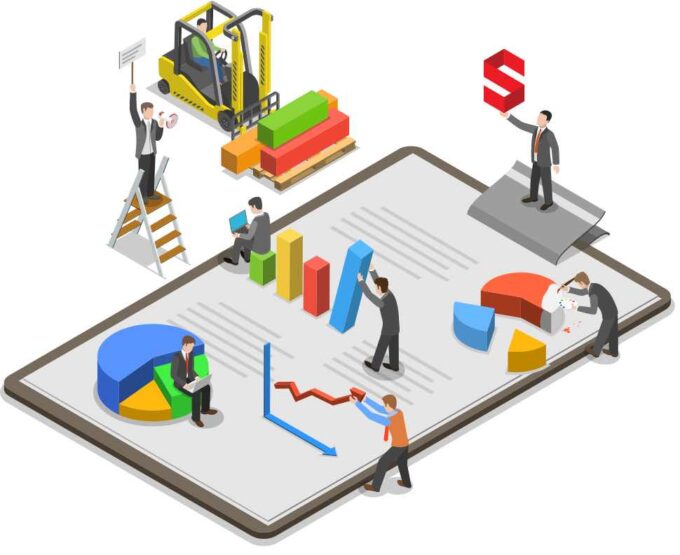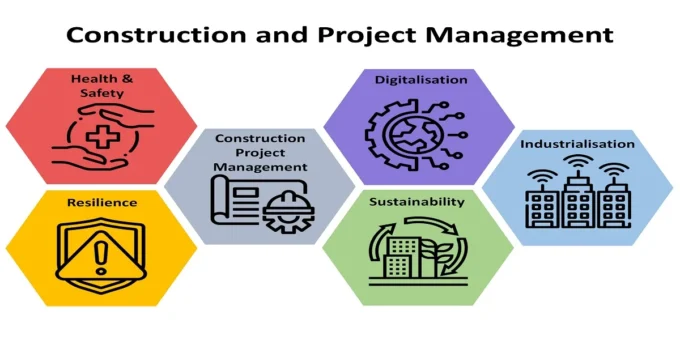Proper resource allocation is critical in project management since it directly affects the completion time of a project and its ability to remain within budget. Especially for larger construction projects, managing resources can quickly become challenging, which is why you may want to consider investing in software.
For instance, software like https://www.alicetechnologies.com/resource-management lets you make the best of your available labor, material, and equipment by automating resource allocation and utilization. This allows you to optimize for success and increase profit margins.
Resource management in construction
- Source: youtube.com
Resource management places labor, materials, and expenses where they’re needed the most and allows for rebalancing when there’s been a change in priorities. Regardless, coordinating all these different factors can be difficult and time-consuming. Developing proper strategies alongside the use of technology can prevent projects from failing.
General contractors must consider project assets for effective completion. These resources may include:
- Manpower in offices and construction sites
- Financial budgets
- Building materials
- Machinery
- Technology
Understanding project scope, required resources, and dependencies will help with effectively strategizing resource allocation.
Why you should use technology for construction resource management
- Source: pinterest.com
Modern technology and software platforms can streamline decision-making when it comes to resources and provide solutions when modifications and changes to prioritization are needed.
Some core benefits of using technology to manage construction resources include:
- Cost reduction – Being able to properly forecast and schedule using technology allows a high degree of accuracy that reduces expenses in time and finances
- Increase in productivity – Technology cuts down on the amount of manual planning that has to be done. Plus, having technology properly determine the right amount of resources needed decreases the number of interruptions in projects
- Ability to easily acclimate to changes and modifications – Unforeseen circumstances can derail projects. Some technological platforms can help with recovery, reducing the impact of unexpected issues on projects
- Decrease in paperwork – Since everything is digital and updated in real-time, the amount of paperwork needed significantly decreases. This also ensures that teams have access to accurate data
6 strategies for resource management in construction
- Source: mdpi.com
Along with using technology, here are some strategies for efficient resource management.
Identify resource constraints
Resource prioritization can differ from project to project and phase to phase. Regardless, it’s important to identify where resources are constrained and plan around availability to avoid schedule conflicts and unnecessary delays. It’s also crucial to avoid overloading workers, since this can lead to quality issues and a decrease in expected output.
Acknowledge that every team has its own methods
Each team may have its own methodology that allows them to complete work more effectively. Acknowledging this can go a long way in terms of productivity.
Ensure you have a comprehensive view of your overall organization and its individual members. From there, you can align workflows to enable more seamless collaboration and efficient time management.
Understand that resource management is a constant
When it comes to construction projects, always expect the unexpected. Unforeseen circumstances (such as natural disasters and government interventions) and design changes for the purpose of increasing accuracy are pretty common.
Resource management doesn’t stop even after initial planning. Conflict analysis and prioritization optimization should be a constant and should be done on an ongoing basis to avoid catastrophic project delays.
It is also best to consider an expert construction asset management service to better track your equipment, progress and the overall completion of the project.
Implement time tracking technologies
Whether it’s buddy punching or tracking methods that permit errors in worker hours, wasted time means wasted resources. You may want to consider implementing time tracking technologies.
Although Excel sheets are commonly utilized, they can quickly become messy as projects grow, and they don’t guarantee accuracy. Being able to effectively track time allows for better performance reviews.
Avoid burning out workers
Account for administrative days off, sick days, and paid-time off. It’s unreasonable, after all, to expect everyone to have the ability to work overtime and to cover for absentees.
Burnout can result in workers walking out on an unfinished job, strikes, work injuries, and mistakes on the job that can end up costing more to fix in the long run.
Turnover also demands valuable time and resources for re-hiring that could be used to complete projects. Hiring and training new workers to get them to the necessary level of skill requires time and supervision.
It’s crucial to remember that people are valuable resources, and they can make or break projects. Take care of them and make sure they are compensated well.
Effectively assign roles that meet project needs
- Source: pinterest.com
Soft-booking assignments first helps with the process of future prioritization. It gives the project room for flexibility, which lets you plan in advance when predicting profit margins, capacity, and demand. Afterward, you can hard-book assignments with detailed information to meet short-term goals.
Controlling resource use
In order to control resource use on a construction project, it is important to have a clear understanding of what resources are required and when they are required. This can be achieved through the development of a construction schedule that outlines the sequence of work and the associated resources.
Once the schedule is developed, it is important to monitor resource use against the schedule to ensure that resources are being used as planned. If there are deviations from the plan, corrective action may be necessary to get back on track.
Resource management also involves procurement, which is the process of acquiring the necessary materials and equipment for a project. Procurement can be done through direct purchase or rental, and it is important to consider cost, quality, and availability when making decisions about procurement.
Finally, effective waste management is essential for controlling resource use in a construction project. Waste can come in many forms, such as unused materials, leftover debris from demolition, or even human waste. Proper disposal of waste will help to keep resources adequately controlled throughout the course of a project.
Resource management is a vital part of construction projects
- Source: issuu.com
General contractors should always be looking for ways to optimize their resources in order to save time and money. By using the strategies we’ve outlined here, you can streamline your workflow and improve your bottom line.














